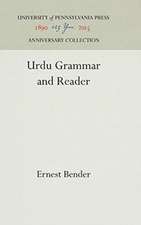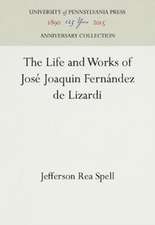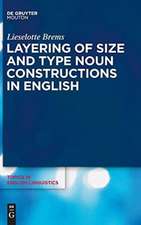Theme and Symbol in Tennyson`s Poems to 1850
Autor Clyde De L. Ryalsen Limba Engleză Hardback – 28 ian 1964
Alfred Tennyson, the author claims, was one of the last poets able to make both voyages, but he could only do so with great effort and at great expense. By nature introspective, he found the life of the mind far more appealing than the life of action; yet he knew, like Milton and Keats before him, that great poetry demands the voyage without as well as the voyage within. His early poetry, then, is concerned with the pull of the two voyages, and thus it becomes, in Arnold's worlds, the dialogue of the mind with itself.
There is for modern readers something intensely interesting about such a divided personality, for we see in Tennyson almost the same dilemma that faces contemporary artists. Often when we read his poems we feel that Tennyson is of our age. But then at times he seems as remote from us as Bishop Wilberforce and his anti-Darwin fulminations. What, then, is there about Tennyson that makes him appear so modern and yet so dated? The answer is not easily given, although this has been one of the primary concerns of Tennyson's critics.
In this book, the author shows how Tennyson became the mental voyager exploring both the inner and outer worlds, and further, how in making the two voyages he followed the pattern of development of other Romantic artists of the nineteenth century. He examines certain themes and images in Tennyson's early verse which in their frequent recurrence attain symbolic status, and by doing so, he shows that there is a very clear-cut pattern in Tennyson's poetry, one which is repeated time and again throughout the poet's work to 1850.
Preț: 556.71 lei
Preț vechi: 625.52 lei
-11% Nou
Puncte Express: 835
Preț estimativ în valută:
106.52€ • 111.54$ • 88.36£
106.52€ • 111.54$ • 88.36£
Carte tipărită la comandă
Livrare economică 09-23 aprilie
Preluare comenzi: 021 569.72.76
Specificații
ISBN-13: 9781512806199
ISBN-10: 1512806196
Pagini: 282
Dimensiuni: 140 x 210 x 15 mm
Greutate: 0.58 kg
Ediția:Reprint 2016
Editura: MT – University of Pennsylvania Press
ISBN-10: 1512806196
Pagini: 282
Dimensiuni: 140 x 210 x 15 mm
Greutate: 0.58 kg
Ediția:Reprint 2016
Editura: MT – University of Pennsylvania Press
Cuprins
Foreword
Acknowledgements
I. Juvenilia
II. Poems, Chiefly Lyrical
III. Poems of 1832
IV. Poems of 1842
V. The Princess
VI. In Memoriam
Afterword
Notă biografică
Claude De L. Ryals was Professor of English at Duke University.

















